Breeds News & Entertainment Russian Bolonka
Once on the Brink of Extinction, How the World’s Cuddliest Dog Was Saved from Disappearing Forever. Meet The Russian Bolonka Puppy
A close relative of the popular Bichon Frise, the Russian Tsvetnaya Bolonka or Bolonka—also called the Bolonka Zwetna in Germany and other parts of Europe—is a rare toy breed that is seriously underrated in the United States.
The name “Russkaya Tsvetnaya Bolonka” translates literally from Russian to English as “Russian Colored Lapdog,” which is an apt name for the breed. Petite and affectionate, these small companion dogs are content to sit with their humans for hours and truly exemplify lap dogs.
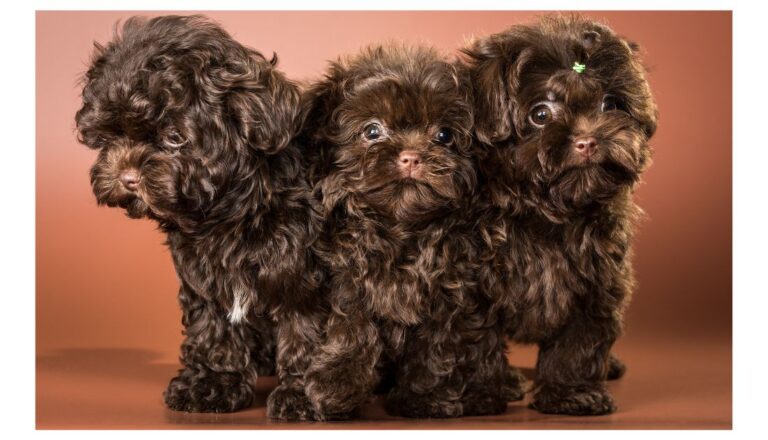
As puppies, Bolonkas are nearly irresistible and look like little living teddy bears. If you think you can resist the charm of the Russian Bolonka puppy by all means, keep scrolling, but don’t say we didn’t warn you—you’re about to have a new dog breed obsession!
Meet 5 Russian Bolonka Puppies from Instagram
You have to see how cute Russian Bolonka puppies are for yourself to believe it—these tiny fluffy puppies are out-of-this-world adorable! Let’s meet five Russian Bolonkas and see what they looked like as pups and whether they’ve changed at all now that they are full-grown.
1. Pulla
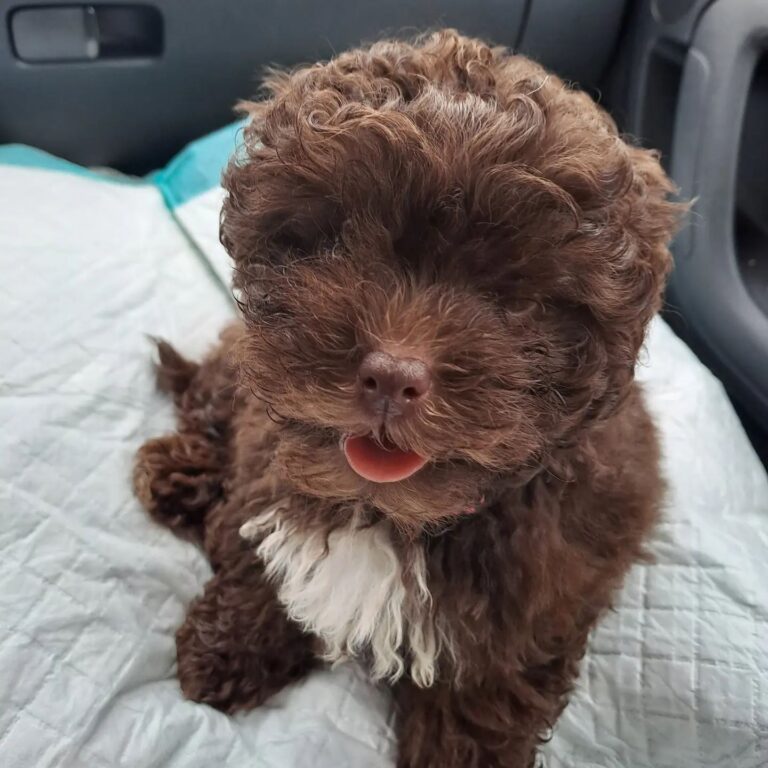
Pulla is a teeny-tiny Russian Bolonka puppy from Raahe, Finland who is only a few months old! The most adorable little bundle of chocolatey cuteness, Pulla’s humans are already making sure this tiny puppy has confidence around everything from soccer balls to horses.
2. Louis
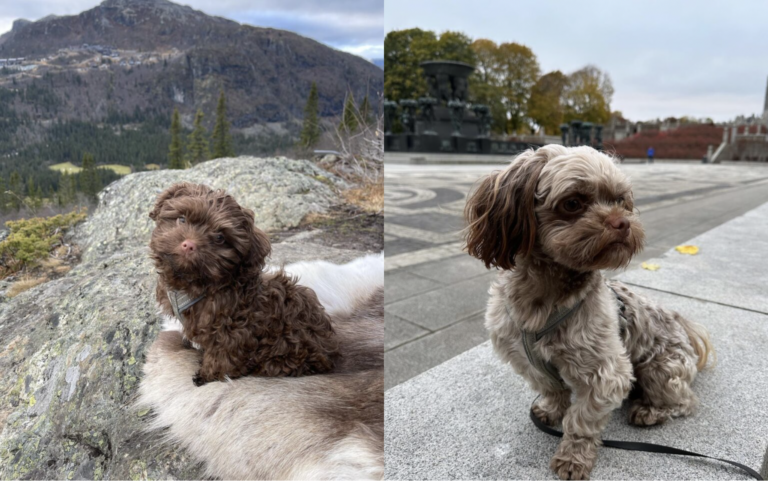
Louis is all grown up now (right) but look at what a little muffin he was as a puppy! So alert and curious, Balanka puppies are tons of fun to watch as they explore the world and learn new things. Like many dog breeds, Bolonka puppies usually become lighter as they age.
3. Ilo & Valo
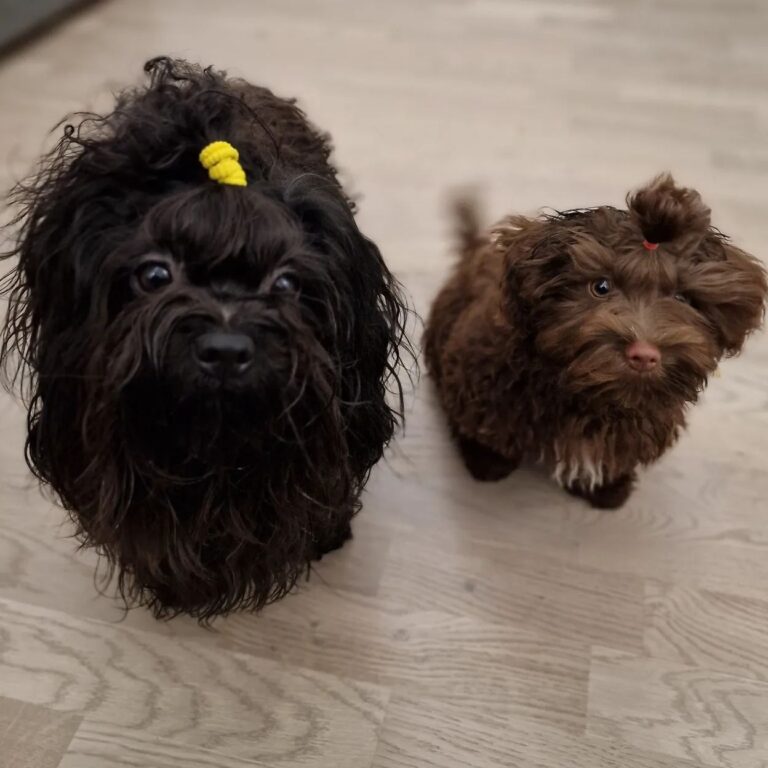
Here’s a chance to see what a Russian Bolonka puppy looks like next to a fully grown Bolonka! Ilo (left) and Valo (right) are now both full-grown, but when this photo was taken, Valo was just a tiny little pup. As you can see, Ilo isn’t that much bigger, and the Boloka stays quite small as an adult.
4. Milo & Gizmo
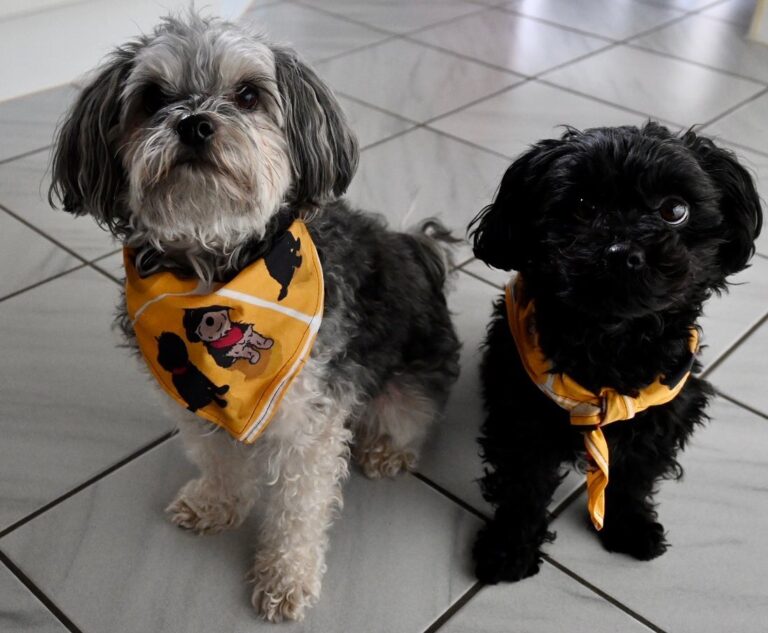
Meet another pair of adorable Bolonka dogs, Milo (left) and Gizmo (right). As you can see, once you’ve had one Russian Bolonka, it’s almost impossible not to get a second puppy!
5. Chewy
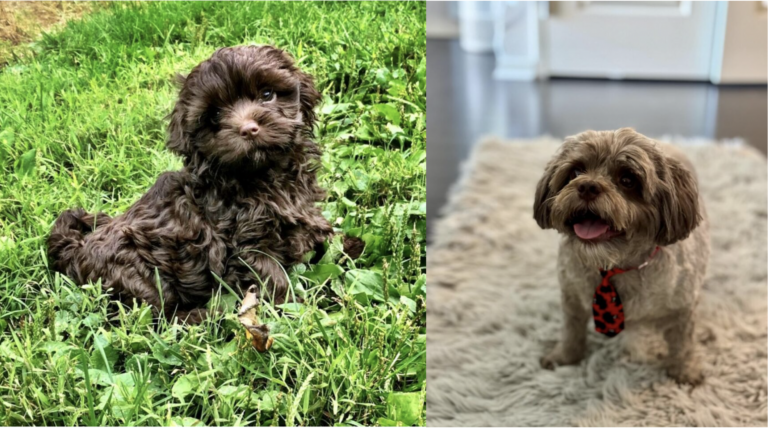
Seven years ago, Chewy was just a tiny little Bolonka Puppy! For a Bolonka, seven is pretty young, and Chewy has many years ahead of him to keep being adorable, fluffy, and did we mention adorable?
Why The Russian Tsvetnaya Bolonka Almost Went Extinct
The history of the Russian Tsvetnaya Bolonka is a fascinating one and starts as early as the 18th century. A variety of Bichon dogs, the first well-known popular record of the Russian Bolonka came from a gift of several Bolonka dogs by Louis XIV of France to a handful of Russian nobles. Though people quickly fell in love with these little lap dogs, they were widely considered an unnecessary luxury, and the breeding and importation of the breed—and all other dogs—all but ceased during the late 19th and early 20th century.
Strict rules under Soviet rule threatened extinction for this small but beloved dog breed. It wasn’t until the 1950s when a group of breed enthusiasts outside of Russia began trying to standardize the breed that the Bolonka began to gain permanent footing. Using the original dogs extracted from Leningrad—now Saint Petersburg, Russia—and several other small toy breeds like the Maltese and the Shih Tzu, today’s Russian Tsvetnaya Bolonka was officially standardized.
Though we have breed preservationists to thank for the continued existence of the Russian Tsetnaya Bolonka, few people know of this breed. By learning a little about the Bolonka here today, you can help spread the word about this fabulous little dog.
Bolonka Puppy Temperament
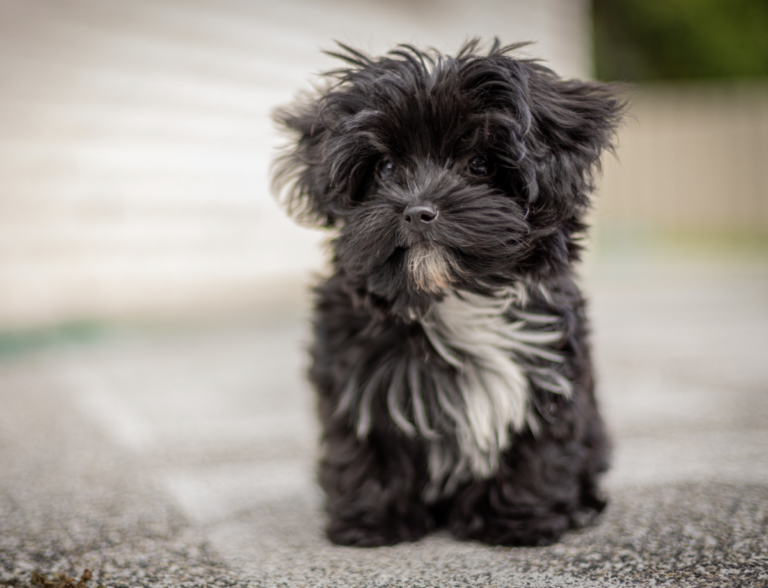
Bolonka puppies are sweet, affectionate, and cuddly little pups who instantly show their human-oriented nature at just a few months old. Friendly and gentle, the Bolonka is remarkably calm compared to other toy breeds, but don’t let their laid-back nature fool you.
Funny, clever beyond words, and easy to train, Bolonka excel as adults in canine obedience, rally, tracking, and agility. Capable of learning many words and intensely loyal to their humans, Bolonka want nothing more than to please their people and work hard to understand your communication.
For some Bolonka, their loyalty turns to alertness, and some may be territorial barkers. Though they love humans, Bolonka can be independent and often choose one or two people to rely on while ignoring other people altogether. With early socialization, Bolonka can be very outgoing but don’t expect them to snuggle up next to strangers right away. When raised with them, Bolonka are excellent with children and other animals, though they may show some apprehension in new environments.
Bolonka Puppy Size
Bolonka puppies are tiny little balls of fluff, and they don’t get much bigger as adults! An 8-week-old Bolonka puppy—the youngest you should ever be able to bring home—weighs just 2.8 pounds on average, reaching 4 pounds by 12 weeks, and 6 pounds by six-months-old. A fully grown Russian Bolonka weighs 6–9 pounds and stands at around 11 inches at the shoulder.
| Russian Tsvetnaya Bolonka Puppy Growth Chart [1] | |
| Bolonka Puppy Age | Average Weight |
| 8 weeks | 2.8 pounds |
| 12 weeks | 4.1 pounds |
| 6 months | 6.1 pounds |
| 9 months | 7 pounds |
| 1 year | 7.5 pounds |
Bolonka Puppy Health
Bolonka puppies are typically very healthy, and Bolonkas are one of the longest-lived dog breeds on average. When properly health tested, several serious health issues like liver shunts and Legg-Calve-Perthes disease (a joint issue) can be eliminated and largely avoided. Of course, like all dogs regardless of breed, Bolonka may be susceptible to several health problems during their lifetime, including:
- Joint issues (e.g. luxating patella)
- Eye and vision problems (e.g. eye injuries/corneal abrasion, progressive retinal atrophy)
- Dental disease
- Heart disease
Where To Find Bolonka Puppies for Sale
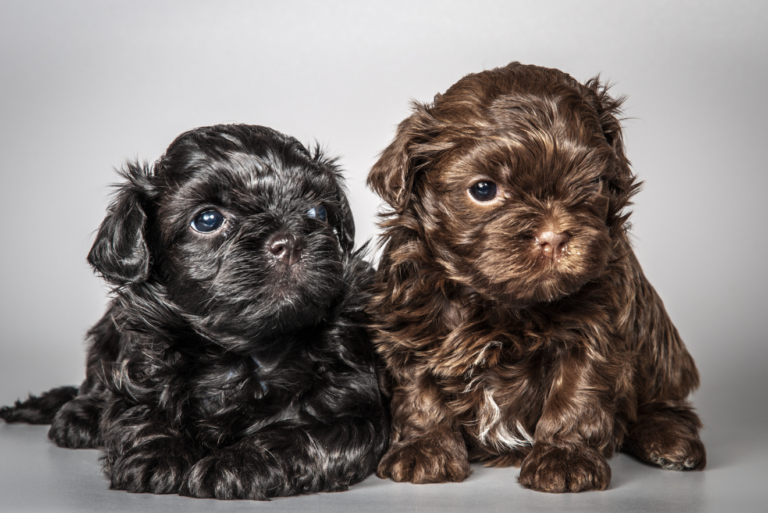
It can be a bit of a challenge finding ethically bred Russian Tsvetnaya Bolonka puppies for sale in the US, but we promise that the time it takes to find a reputable breeder will be well worth it. Responsible Bolonka breeders have their mating pairs rigorously health-tested to eliminate/prevent the passing of genetic illness, and treat their dogs with as much love and care as you will give your puppy.
If you’re lucky, a quick search for “Bolonka puppies for sale near me” may yield results, but the most reliable place to start is with the Russian Tsvetnaya Bolonka Club of America’s breeder referral list.
Bolonka Puppy FAQ
Few people have ever heard of the Russian Tsvetnaya Bolonka, so naturally they have a lot of questions about the breed! Beyond the basics, we’re answering specific questions about life with a Bolonka puppy, and what you can expect if you choose to make one of these dogs a member of your family.
Are Bolonka puppies hypoallergenic?
Sort of. The Russian Bolonka is a low-shedding breed, which many people consider a “hypoallergenic” trait. In truth, there is no such thing as a 100% hypoallergenic dog breed, and all dogs carry approximately the same amount of the protein that causes allergic reactions in humans. Low-shedding breeds drop less fur, and therefore may not shed as much dander around your home, but this is not a 100% guarantee that an individual with severe allergies will be able to spend time with this breed.
Hypoallergenic, funny, clever, and affectionate? This breed almost sounds too good to be true.
Do Bolonka puppies shed?
Very little. A low-shedding breed, the Russian Bolonka’s thick fur is similar to a Maltese or a Shih Tzu and drops very little. This said, their thick coat requires daily brushing to prevent matting, and Bolonka puppies should begin visiting a groomer around 6–8 months old for regular trims.
How long do Russian Bolonkas live?
The Russian Bolonka is a remarkably long-lived dog with an average lifespan of around 14–20 years.
What colors are breed standard for Russian Bolonka puppies?
The American Kennel Club and the Russian Tsvetnaya Bolonka Club of America recognize at least nine official breed colors. Disqualifications for the breed include solid white, spotted, parti, and merle, but all other solid colors and sable are accepted. Standard Bolonka puppy colors include:
Black
Brown
Cream
Fawn
Gray
Red
Sable
Silver
Wolfgray
How much do Russian Bolonka puppies for sale cost?
Most Bolonka breeders advertise their Bolonka Zwetna puppies for sale for around $1,500—$3,000.
Are Bolonka puppies rare?
Relatively rare. The Russian Tsvetnaya Bolonka was nearly extinct until after the Cold War, and the breed has never gained significant notoriety beyond a small but dedicated group of Bolonka enthusiasts.
What is a Bolonka Poo?
A Bolonka Poo is a “designer” mixed breed that is 50% Russian Tsvetnaya Bolonka and 50% miniature or toy Poodle. We do not recommend purchasing one of these dogs, and it is best to skip over advertisements for Bolonka Poo puppies for sale. Ethical breeding, particularly of rare breeds, is key for breed preservation and quality lives for the dogs produced by dog breeding initiatives.
Related Articles:
- You Won’t Recognize These Maltipoos After Their Stunning Transformation
- Ultra-Rare Blue Merle Pomeranians Sell for Over $4,000. Are They Worth The Price?
- If You Have a Small Dog, NEVER Let Them Do This
- The Ultimate Fluff Overload: Nine Parti Yorkies on Instagram You Need To Follow Now!



